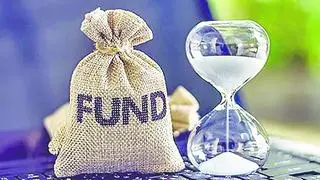The Indian Railways loaded 1,145.69 million tonnes (mt) so far this fiscal year (as of Thursday), crossing last financial year’s total cumulative despatch of 1,145.61 mt, said Suneet Sharma, Chairman and CEO, Railway Board.
This growth in freight handling this fiscal is despite a drop in loading of coal, added Sushant Mishra, Additional Member-Traffic, Railway Board, who was also present at the press met. Traditionally, coal — mainly for power plants — has accounted for the largest chunk of the Railways’ freight loading.
Shift from road
Petroleum products movement also saw a drop with a dip in overall transport demand during the year, said Mishra.
The Railway loading data is one of the indicators of economic growth, and the overall higher cargo handling indicates a recovery. But it must be noted that some of this cargo used to move by road. Also, the freight loaded by the Railways in fiscal 2020 was one per cent lower than that in fiscal 2019.
The growth in loading so far this fiscal is significant because it has recovered from a deficit of 70 mt in the April-July period. Since August, the Railways has moved more every month against the same time last year.
The drop in coal was more than made up by higher loading of iron and steel, raw materials for steel plants, cement and clinker, foodgrain, fertiliser, and containers.
Importantly, the Railways also carried goods that were traditionally it was not moving. The Railways diversified cargo loading brought in an extra 15 mt from sectors such as automobiles (84 per cent growth), fly ash (36 per cent), stone (57 per cent), onion (234 per cent), chemical salt (439 per cent), sand (274 per cent), sugar (19 per cent) and cotton (266 per cent), according to Railways data.
Passenger services
Passenger services are also coming back on track, with express, mail and suburban operations resuming. Overcrowding is seen in some un-reserved trains, said Sharma.
The Railways is keeping a close eye on the Covid-19 spread, post the recent surge in some parts, and is in consultation with the State governments for the services.







Comments
Comments have to be in English, and in full sentences. They cannot be abusive or personal. Please abide by our community guidelines for posting your comments.
We have migrated to a new commenting platform. If you are already a registered user of TheHindu Businessline and logged in, you may continue to engage with our articles. If you do not have an account please register and login to post comments. Users can access their older comments by logging into their accounts on Vuukle.